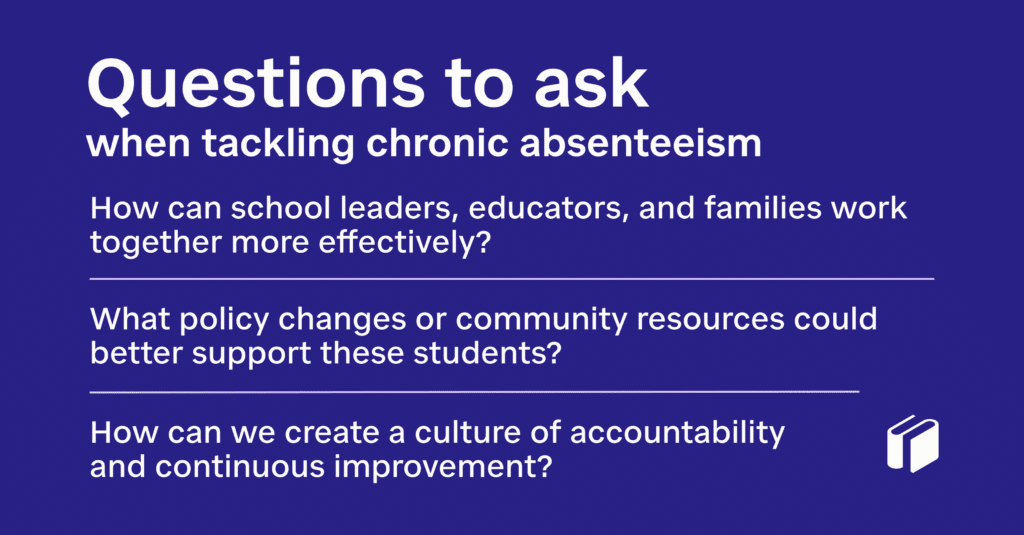

Chronic absenteeism is a prevalent issue affecting students across the nation, and those with disabilities are among the most vulnerable. According to a recent report from The 74 Million, in Minneapolis, students with disabilities accounted for nearly three-quarters of chronically absent students in the 2020-21 school year. This alarming statistic highlights the urgent need for schools to address this challenge proactively. The recent US Dept of Education report on chronic absenteeism notes, “Students with disabilities are 1.5 times more likely to be chronically absent than students without disabilities. The Individuals with Disabilities Education Act (IDEA) is intended to ensure all students with disabilities have access to a free, appropriate education yet chronic absenteeism is a barrier that gets in the way of achieving that goal.”
Here are three strategies you can implement this school year to reduce chronic absenteeism for students with disabilities.
1. Leverage Data-Driven Decision-Making
The first step in tackling chronic absenteeism among students with disabilities is to utilize data as a key driver for change. Schools should closely monitor attendance data, disaggregated by student subgroups, including those with disabilities. By identifying patterns and trends, educators can pinpoint the root causes of absenteeism and develop targeted interventions to address specific needs.
Use these three guiding questions to sharpen your focus:
- How can we effectively track and analyze attendance data for students with disabilities?
- What patterns or trends are emerging from the data, and what might be the root causes?
- How can we use this data to develop targeted, personalized interventions?
2. Foster a Sense of Belonging and School Connectedness
Students with disabilities often encounter distinct hurdles that may lead to disengagement and absenteeism. To address this challenge, schools must prioritize nurturing a sense of belonging and school-connectedness. Author Geoffrey Cohen talks about the negative impact of “belonging uncertainty,” which is when a person struggles with the feeling that they don’t belong. When students experience uncertainty, Cohen notes, “All of a sudden, little things like criticism from a teacher can loom very large and take up a lot of mental bandwidth. If you’re a member of a marginalized group, belonging uncertainty can be a chronic condition.”
Increasing school connectedness, which reduces belonging uncertainty, can be achieved through inclusive practices, personalized support, and a caring school climate that celebrates diversity and promotes acceptance.
Here are some tips to get started:
- Implement inclusive practices that celebrate diversity and promote acceptance
- Provide personalized support and accommodations to meet unique student needs
- Create opportunities for students to get involved, build relationships, and find their niche
3. Strengthen Family Connections with 2-Way Communication Channels
Effective communication between schools and families is crucial in addressing chronic absenteeism among students with disabilities. A study by Attendance Works found that attendance increased by up to 30% when schools and families partnered through programs like home visits and regular communication. Regular two-way communication channels can help identify potential barriers, provide support, and reinforce the importance of consistent attendance. By involving families as partners, schools can develop comprehensive strategies that address individual student needs.
Here are some initial action steps to take:
- Establish regular two-way communication channels (e.g., meetings, newsletters, text exchanges)
- Involve families in developing strategies to support attendance and engagement
- Provide resources and training to help families overcome potential barriers
Moving Forward: A Collective Responsibility
Tackling chronic absenteeism among students with disabilities requires a multi-faceted approach involving stakeholders from every constituent group. Education leaders, policymakers, educators, families, and the community at large must collaborate to create an environment that supports the unique needs of these students. Here are three questions to help guide the work.

By prioritizing data-driven decision-making, fostering school connectedness, and strengthening family communication, we can empower students with disabilities to overcome barriers and achieve academic success.
If you would like help leveraging technology, data, and collaborative partnerships to address chronic absenteeism in your district, let’s talk!
Stay Connected
News, articles, and tips for meeting your district’s goals—delivered to your inbox.





